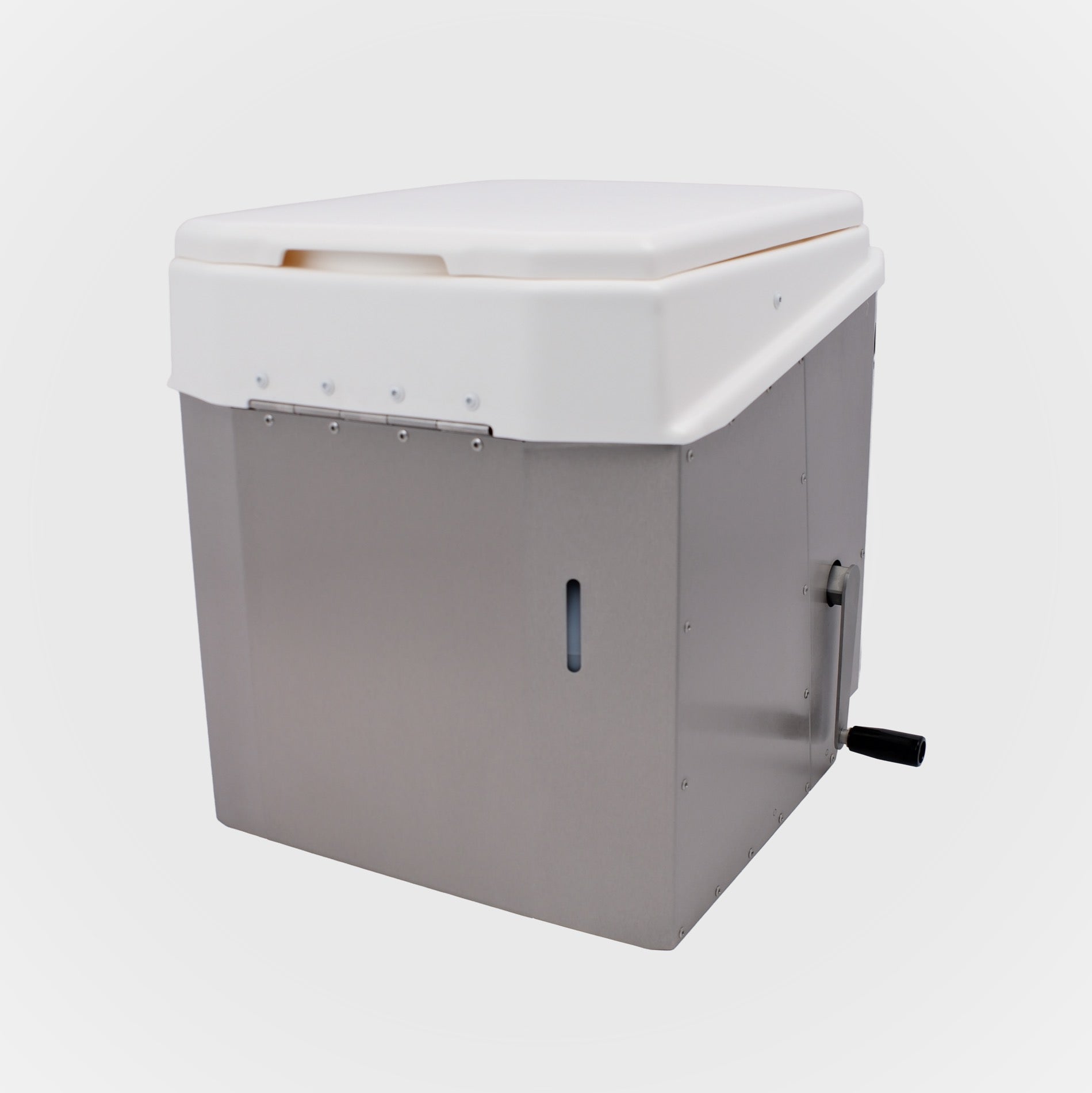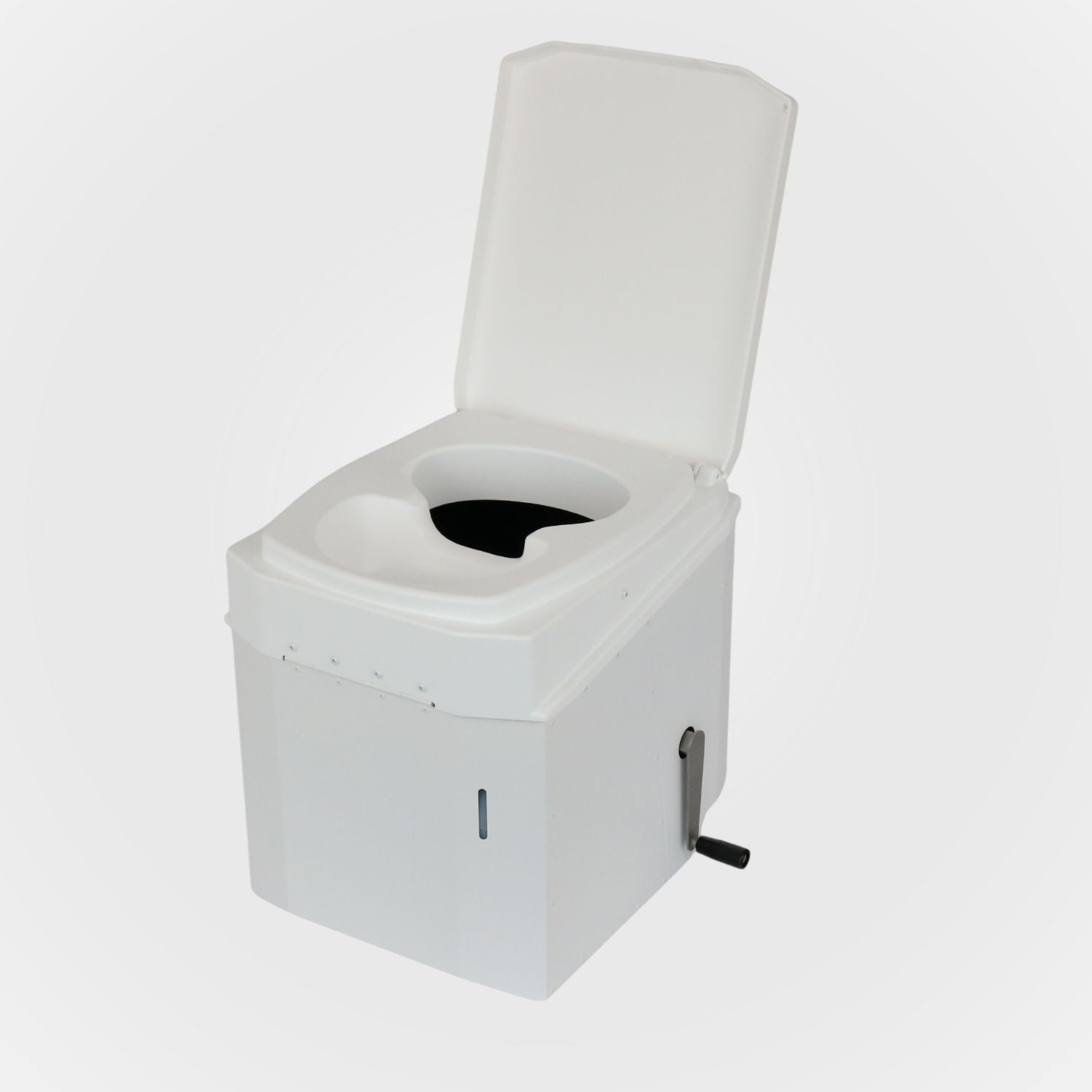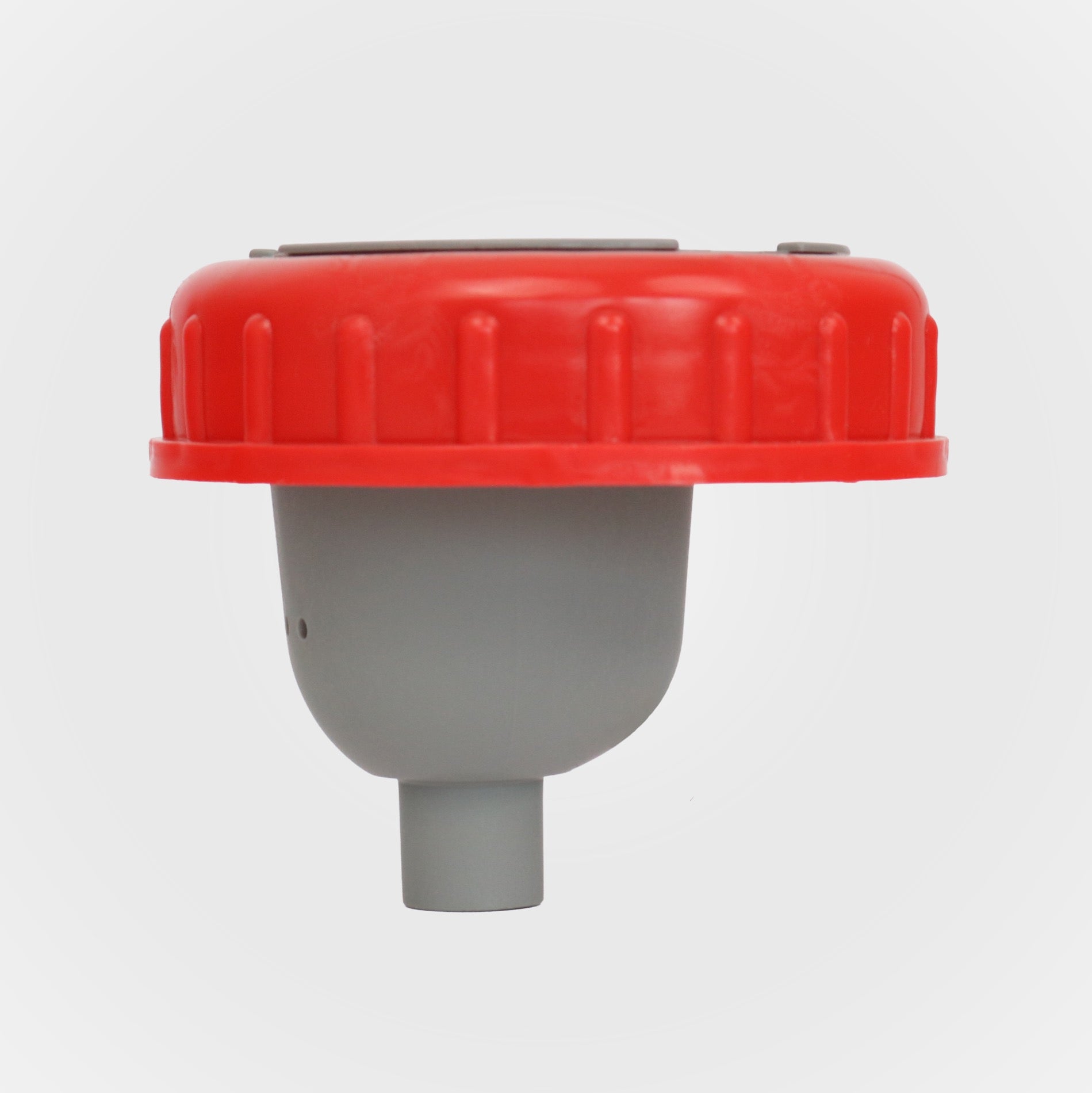Even in cases of diarrhea, a dry composting toilet remains a reliable solution, provided a few basic points are observed. Crucial factors include the right bedding, more frequent emptying, consistent cleaning, and a good ventilation system.
Especially in enclosed spaces like caravans or vans, the interplay of these factors plays a crucial role. The following article explains how to prevent odors in a dry composting toilet, what's important to consider when using it if you're ill, and which bedding materials are particularly suitable for diarrhea.
Can a dry composting toilet be used even if you have diarrhea?
Yes, even with diarrhea, a dry toilet can be used without hesitation. Especially in cases of gastrointestinal infections, traveler's diarrhea, or acute diarrhea caused by spoiled food, the question arises as to how hygienically a dry toilet functions under difficult conditions. The system architecture of this sanitary solution is designed to reliably collect and isolate even highly liquefied excrement.
Crucially, absorbent natural bedding such as coconut fibers or fine wood shavings should be used to efficiently absorb excess moisture and prevent odors. If the liquid content is high, it is recommended to empty the solids container more frequently to maintain the microbiological balance and hygienic integrity of the toilet.
Thanks to contactless emptying and clearly structured cleaning routines, handling remains safe even in cases of infectious diarrhea. Dry toilets thus retain their full functionality even when stool consistency deviates from the norm.
What should you consider when using a dry composting toilet and experiencing diarrhea?
When using a dry toilet during a diarrheal illness, moisture retention, odor prevention, and hygiene are essential. Since the stool is highly liquid, a generous amount of absorbent bedding such as coconut fibers, wood shavings, or bark mulch must be added after each use to absorb excess moisture and neutralize odors.
It is particularly important to empty the solids container at shorter intervals to prevent microbial imbalance and maintain the system's freshness. In cases of infectious diseases, a separate collection container should be used to specifically prevent the potential spread of germs.
Material maintenance is carried out as usual with mild, biodegradable cleaners; aggressive chemicals should be avoided to protect the material. In models with ventilation or agitation, active ventilation further supports the drying process.
Even used toilet paper can remain in the solids container and contributes positively to moisture regulation.
How often should the solids container be emptied in case of diarrhea?
In case of diarrhea, the solids container of a dry composting toilet should ideally be emptied daily or immediately after a severe bout of diarrhea. The significantly increased moisture content from the liquid stool alters the microclimate in the collection container and, if not emptied promptly, can lead to rapid odor formation and hygiene risks.
While a change every three to five days is sufficient for normal use, the particular consistency of the diarrhea requires significantly more frequent monitoring.
Crucial here is not only the frequency, but also the interaction with highly absorbent materials such as wood shavings or coconut fibers, which bind the moisture and stabilize the mass. Should a muddy state or unpleasant odor occur despite the bedding, immediate emptying is essential. Our recommendations for bagged dry toilets :
- Emptying interval under normal use: Every 4 days
- Emptying interval in case of diarrhea: Every day
- Emptying interval for multiple travelers: Every 2 days
What effect does diarrhea have on the odor formation of a dry composting toilet?
Diarrhea intensifies odor formation in a dry composting toilet because it significantly increases the moisture content in the solids container. In a wet environment, anaerobic microorganisms can release gases such as ammonia, hydrogen sulfide, and methane, which are responsible for unpleasant putrid odors.
The natural drying effect, which is crucial for odor control, is severely impaired by the liquid consistency of stool. To counteract these biochemical processes, an immediate response is necessary: the use of highly absorbent materials such as coconut fibers or wood shavings, along with more frequent emptying, stabilizes the toilet's internal environment.
In composting systems, an integrated fan also supports the evaporation of excess moisture and noticeably reduces odor development.
Which bedding is suitable for a dry toilet when the dog has diarrhea?
For use in a dry toilet during diarrhea, highly absorbent, biodegradable materials such as coconut fibers, medium-coarse wood shavings, and special compost bedding with biochar or rock dust are particularly suitable. These substrates efficiently bind excess moisture, prevent anaerobic decomposition processes, and minimize the formation of volatile sulfur and nitrogen compounds.
Small animal bedding made from softwood and ready-to-use coconut fibers, such as the so-called "FaserRefill," have proven particularly effective, as its absorbent structure effectively controls both moisture and odors. For ease of use, opt for dry, ready-to-use litters that require no pretreatment. Materials like miscanthus or plant-based organic cat litter offer an interesting alternative, provided they are compostable and don't significantly increase the bag's weight.
However, consistent use remains crucial. After each use, generous amounts of litter must be added to keep the mixture dry and ensure the hygienic functionality of the dry toilet. If no litter is available, crumpled newspaper, dry leaves, or powdered wood ash can be used in an emergency to quickly absorb excess moisture.
Proven bedding materials for diarrhea
-
Coconut fibers : Highly absorbent, structurally stable, compostable and odor-binding.
-
Medium-coarse wood shavings : Ideal for rapid moisture absorption and air circulation in the container
-
Compost bedding with biochar or rock dust : Neutralizes odors and promotes aerobic decomposition.
-
Small animal bedding made of softwood : Inexpensive, readily available, highly absorbent.
-
Special blends : Extra absorbent and optimized for odor neutralization
-
Miscanthus (elephant grass) : Very light, compostable, an interesting alternative for campers
-
Plant-based cat litter (without additives): Compact, absorbent, but pay attention to compostability.
At BioTioo, we rely on a combination of high-quality processed coconut fibers and specially formulated compost bedding . Our materials are not only extremely absorbent and 100% biodegradable, but they also ensure a stable substrate structure, promote natural composting, and effectively minimize unpleasant odors.

What can you do about a smelly dry composting toilet?
To combat a smelly dry composting toilet, targeted measures can be taken that focus on moisture regulation, separation technology, and odor control. An immediately effective strategy is to consistently cover the solids with dry, absorbent bedding such as coconut fibers, wood shavings, or miscanthus to counteract odor formation right from the start.
Equally important is the regular emptying of both containers. The urine canister should be emptied every two to three days to prevent ammonia buildup and putrefactive gases. Cleaning with diluted vinegar or citric acid protects against limescale and effectively neutralizes any odors .
In mobile or humid environments like campers, preventing condensation is crucial. Damp surfaces on the separator insert should therefore be regularly dabbed. An active exhaust system or a power-free ventilation duct can further help by removing humid air and keeping the interior dry. Proper separation of urine and solids remains essential, as this is the only way to effectively prevent anaerobic decomposition. Using household remedies like baking soda can further optimize odor control within the plastic container.








